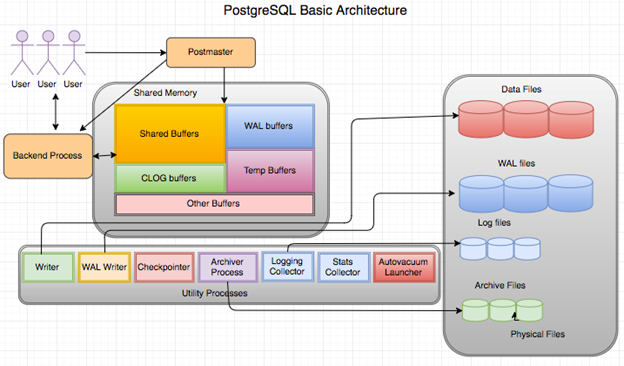Architecture
 Suggest changes
Suggest changes


PostgreSQL is an RDBMS based on client and server architecture. A PostgreSQL instance is known as a database cluster, which is a collection of databases as opposed to a collection of servers.

There are three major elements in a PostgreSQL database: the postmaster, the front end (client), and the back end. The client sends requests to the postmaster with information such as IP protocol and which database to connect to. The postmaster authenticates the connection and passes it to the back-end process for further communication. The back-end process executes the query and sends results directly to the front end (client).
A PostgreSQL instance is based on a multiprocess model instead of a multithreaded model. It spawns multiple processes for different jobs, and each process has its own functionality. The major processes include the client process, the WAL writer process, the background writer process, and the checkpointer process:
-
When a client (foreground) process sends read or write requests to the PostgreSQL instance, it doesn't read or write data directly to the disk. It first buffers the data in shared buffers and write-ahead logging (WAL) buffers.
-
A WAL writer process manipulates the content of the shared buffers and WAL buffers to write into the WAL logs. WAL logs are typically transaction logs of PostgreSQL and are sequentially written. Therefore, to improve the response time from the database, PostgreSQL first writes into the transaction logs and acknowledges the client.
-
To put the database in a consistent state, the background writer process checks the shared buffer periodically for dirty pages. It then flushes the data onto the data files that are stored on NetApp volumes or LUNs.
-
The checkpointer process also runs periodically (less frequently than the background process) and prevents any modification to the buffers. It signals to the WAL writer process to write and flush the checkpoint record to the end of WAL logs that are stored on the NetApp disk. It also signals the background writer process to write and flush all dirty pages to the disk.


